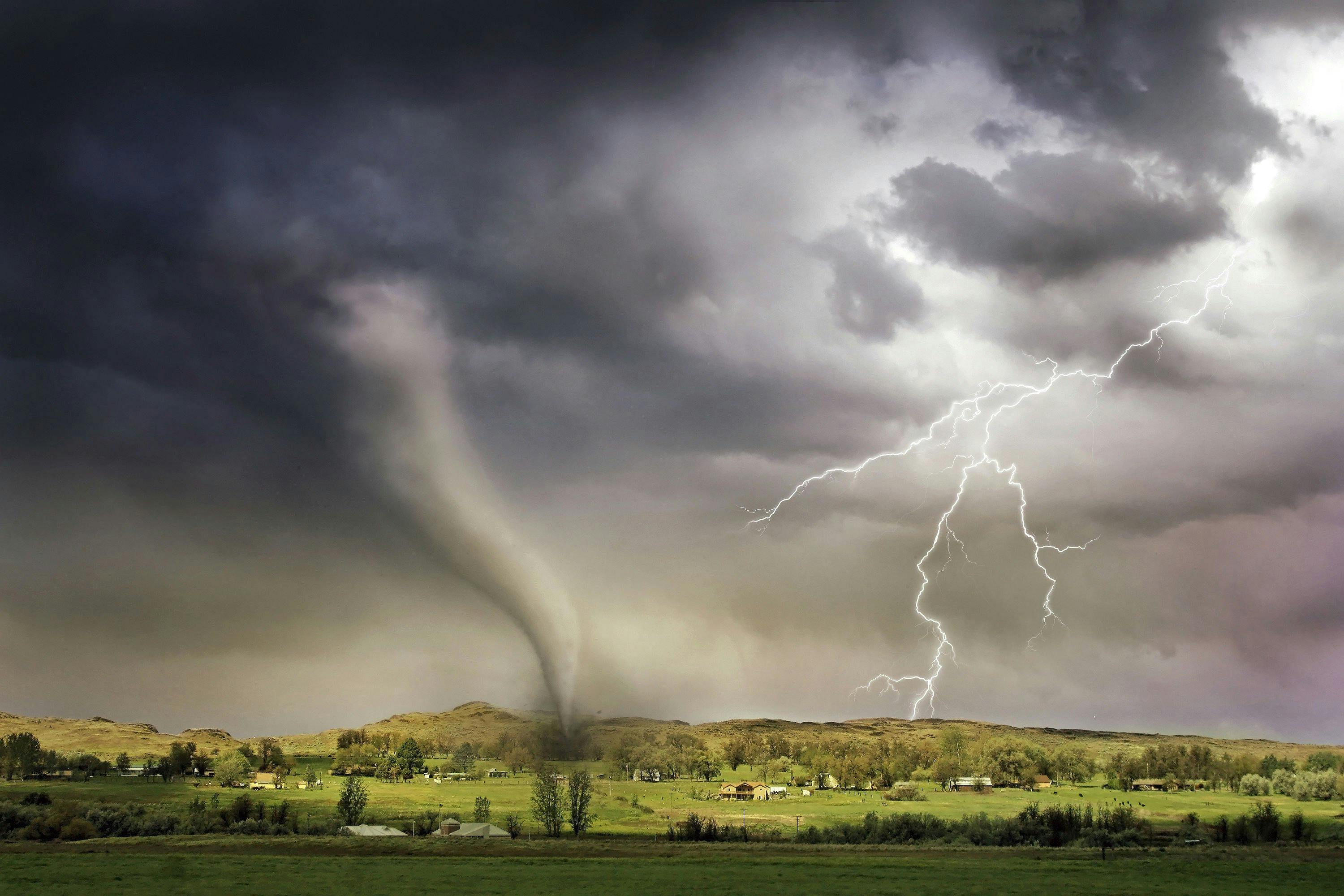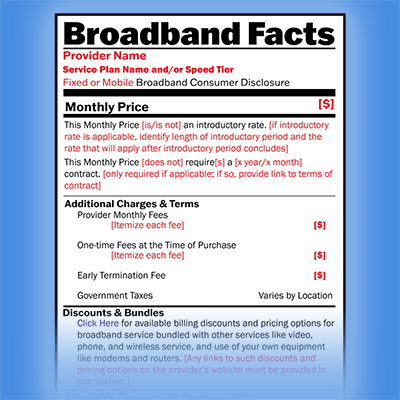Dish Network's recent channel lineup shift impacts viewers significantly. Ethnic Channels Group Inc. is at the center of the change. In the intricate dance of satellite television, where each channel is a step, harmony is key. But sometimes, one misstep can disrupt the entire performance, leaving viewers feeling out of tune.
Dish Network's Viewer Base in Turmoil over Channel Changes
Dish Network's recent channel lineup shift impacts viewers significantly. Ethnic Channels Group Inc. is at the center of the change. In the intricate dance of satellite television, where each channel is a step, harmony is key. But sometimes, one misstep can disrupt the entire performance, leaving viewers feeling out of tune.
Enter Ethnic Channels Group Inc.
Suddenly, Tamil-speaking audiences find the music has stopped. No warning, just silence where once there was the vibrant beat of beloved channels.
Introduction
Dish Network's recent channel lineup shift has resulted in the removal of key Tamil language offerings, leaving a void for many subscribers. Ethnic Channels Group Inc., the broadcaster behind this portfolio, is at the center of this change. With varied offerings like Bein Sports and BBC India, the group is a heavyweight in the world of ethnic broadcasting. The implications of these channel losses touch not just individuals, but also resonate through the entire Dish community, impacting both domestic and international audiences. In an evolving media landscape, this change is a significant marker of the delicate balance providers must strike to maintain customer satisfaction. As Dish Network navigates this channel takedown, the consequences ripple out far beyond the immediate loss of content.
Background on Ethnic Channels Group Inc.
Ethnic Channels Group Inc. (ECG), renowned for its globally dispersed broadcasting reach, services a myriad of diasporic communities with culturally-specific programming. This transmitter of multicultural dialogue delivers content through a broad array of language-focused channels, enriching viewers with a sense of connectedness far from their roots. ECG's influence extends well beyond the boundaries of any single nation, acting as a bridge between diverse cultures and the globalized media space.
With a portfolio that encompasses influential networks such as Bein Sports and BBC India, ECG demonstrates mastery over a spectrum of niche content areas — from international sports coverage to the nuanced storytelling of BBC's regional programming. These channels don't just entertain; they serve as pivotal platforms for cultural representation, furthering ECG's mission of delivering ‘home’ to a host community. They are, for many, the thread that weaves the familiar tapestry of their native culture into the fabric of their everyday life in a foreign country.
Profile of ECG
Ethnic Channels Group Inc. (ECG) operates as a broadcasting titan, uniquely tailoring content across diverse cultural spectrums.
Bein Sports and BBC India underscore ECG's knack for engaging global audiences with culturally resonant broadcasting.
With an extensive array of channels, ECG caters to a global audience seeking connections with their cultural heritage through media.
Not just a broadcaster, ECG stands as an emblem of global connectivity, bringing diaspora communities the flavors of home.
Mention of ECG's portfolio
ECG boasts an expansive portfolio that underscores its influence in global broadcasting.
- Bein Sports: Offers comprehensive international sports coverage.
- BBC India: Delivers regional storytelling and news from the subcontinent.
- Tamil language channels: Provide cultural and entertainment content for the Tamil-speaking diaspora.
- Variety of other ethnic channels: Cater to diverse cultural groups with specialized programming.
This lineup showcases ECG's commitment to serving diaspora communities worldwide.
The variety ensures that many find a piece of home, even miles away.
Ethnic Channels Group's Influence
The presence of Ethnic Channels Group Inc. (ECG) in the broadcasting landscape extends beyond the simple transmission of television programs; it represents a bridge between homelands and overseas communities, nurturing cultural ties and catering to the intrinsic need for cultural familiarity. Their Tamil language channels are emblematic of this, offering not just entertainment, but a lifeline to traditions for immigrants and expatriates. ECG's portfolio, featuring heavyweights like Bein Sports and BBC India, further validates its pivotal role in shaping an inclusive media sphere that transcends borders, echoing the diverse voices of an increasingly globalized society.
Media Portfolio's Global Reach
ECG's media portfolio is a vibrant tapestry of global culture, seamlessly integrating a world of experiences into the fabric of daily entertainment.
Their expansive catalog, which includes the highly sought-after Bein Sports and BBC India, reflects a strategic foresight into the burgeoning demand for diverse content that spans continents.
With a reach that extends across various demographics, ECG has effectively curated a selection of channels that resonate deeply with the global audience, fostering a sense of community amongst viewers who may be continents apart.
This global penetration is meticulously achieved through an array of platforms including cable, satellite, and increasingly prevalent, digital streaming services, thus amplifying their presence in both traditional and cutting-edge media landscapes.
As such, ECG emerges as an archetype of broadcasting excellence, harmonizing disparate geographies through the unifying language of television.
Strategic Channels Like Bein Sports
Bein Sports, a jewel in ECG's crown, represents a keystone channel for many sports enthusiasts. Its loss would disrupt viewing routines and weaken Dish's sports broadcasting prowess.
Bein Sports serves as a gateway to premier global sporting events that command a solid viewership base, which includes soccer leagues, tennis tournaments, and motor racing. This channel's exclusivity often tips the scale for subscribers when choosing a service provider, highlighting its value beyond ordinary programming. Its absence could lead to disturbed loyalty and prompt subscribers to seek alternatives with similar offerings.
Furthermore, the channel's allure extends to advertisers seeking targeted demographics. The loss of Bein Sports on Dish could signify decreased advertising revenue, as sponsors might follow audiences to platforms where their presence is assured. This could tighten the financial straits for Dish and heighten the necessity for swift remedial strategies.
In contrast, successfully maintaining channels like Bein Sports as part of their lineup signals to consumers that Dish prioritizes premium content access. It bolsters satisfaction and retention rates, ensuring a competitive edge in an industry where content is king. A stable partnership with ECG could, therefore, undergird Dish's ability to deliver top-tier sports entertainment, reinforcing its standing within the market.
Impact on Dish Network Subscribers
The sudden disappearance of Tamil channels from Dish Network's lineup has shaken the foundation of trust with its Tamil-speaking subscriber community. Customers who previously relied on Dish for culturally resonant content are now confronted with a void, feeling a sense of loss that extends beyond entertainment to a connection with their heritage.
This void may drive subscribers to explore other providers who can fill in the cultural gap left by these channel removals. As a result, Dish not only faces the immediate backlash but risks a potential decrease in subscriber retention over the long term.
Subscriber Sentiments Stirred
While the Tamil channels represented a niche, their absence has been palpably felt. For many subscribers, this takedown is more than inconvenience—it’s losing a touchstone of cultural identity.
Feelings of frustration ripple through the community, compounded by the unexpected nature of the takedown.
Indeed, channels in one’s mother tongue are not merely entertainment but a thread to a distant homeland, woven through daily life (exemplifying socio-cultural anchors in a multicultural tapestry).
The impact is twofold: personal dissatisfaction breeds, leading potentially to service abandonment, while negative word-of-mouth may deter new customers.
Current subscribers are now vocalizing their concerns, urging Dish to resolve the issue promptly. They expect transparency regarding future negotiations or alternatives that could shore up this content loss.
Ultimately, Dish is now on the clock to repair subscribers' trust. Inaction or inadequate solutions could lead to a discernible migration to competitors eager to cater to this culturally significant need.
Impact on Tamil Viewership
The abrupt withdrawal of Tamil channels from Dish Network cuts deep into the fabric of cultural connectivity for the Tamil diaspora. As families lose access to beloved shows and news from "back home," the sense of loss is palpable, fueling community dismay and discontent.
In the absence of these channels, daily rituals and routines stand disrupted. The loss of Tamil media content isn't just about entertainment—it's a gap in cultural continuity for viewers.
Suddenly deprived of a vital cultural lifeline, Tamil-speaking households may feel isolated, robbed of the effortless immersion in their native language and arts that once bridged the distance from their ancestral roots.
As Tamil viewers scramble to fill the void left by this programming gap, alternatives such as international streaming services or other satellite providers may gain traction. In essence, a channel blackout becomes a crossroads, pushing loyal subscribers to explore and embrace new avenues to maintain their cultural engagement.
Potential for Customer Defection
The abrupt loss of Tamil channels could precipitate a significant exodus of subscribers, casting a shadow over Dish Network's market stability. When cultural channels vanish, subscribers start considering their options in the market landscape.
Cultural disconnect leads subscribers to seek providers who respect and cater to their cultural needs. The emotional pull of lost content often hastens the defection decision-making process.
As competitors observe, they may tactically position themselves as cultural hubs for the Tamil community, exacerbating Dish Network's customer retention challenges. This can stimulate a competitive response, where rivals offer targeted packages to these suddenly unmoored viewers.
Amidst the fallout, Dish Network faces not only the immediate loss of subscriptions but a tarnished brand reputation within the ethnic communities. Restoring trust becomes a more formidable task than acquiring new subscribers.
Furthermore, word-of-mouth amongst communities is a powerful influence, potentially amplifying the negative impact of channel losses. A single family's defection can cascade into a larger communal shift away from Dish Network.
Ultimately, the degree of customer loyalty Dish Network has fostered will be tested. Without swift, customer-focused solutions, the broadcaster risks a lasting fracture in its subscriber base.
Dish Network's Strategic Challenge
Navigating the complex terrain of broadcaster agreements, Dish Network encounters a strategic challenge with the loss of Tamil channels from its roster. Fragile relationships with content providers, like Ethnic Channels Group Inc., underscore the vulnerability of Dish Network's channel lineup. This precarious situation demands agility and acute business foresightedness to prevent further erosion of their diverse subscriber base.
The strategic significance of offering a variety of ethnic channels cannot be overstated as they serve as a cultural lifeline for expatriate communities. With each channel takedown, Dish Network must reassess its portfolio strategy to ensure it remains a provider that mirrors the multicultural landscape of its audience.
Retaining Diversity in Offerings
The allure of Dish Network lies in its robust ensemble of international programming catering to diverse cultural tastes.
- Expanding partnerships with alternative content providers can fill gaps left by lost channels.
- Leveraging streaming technology to offer on-demand ethnic content enhances viewer flexibility.
- Investigating community feedback guides the curation of a representative media selection.
- Advancing package customization gives subscribers the power to create their ideal lineup.
A carefully curated selection retains subscribers while reflecting the multicultural tapestry of the audience.
The task ahead for Dish is clear: reinvent and enrich the spectrum of their offerings to reaffirm their commitment to diversity.
Risks of Further Channel Losses
The ripple effect of losing key ethnic channels could be catastrophic for Dish Network's market position. Sustaining subscriber loyalty is inextricably tied to offering a diverse channel lineup. An inability to provide culturally relevant content may prompt subscribers to seek alternatives, leading to a substantial decline in consumer retention. This loss goes beyond financial repercussions; it risks eroding the unique value proposition that sets Dish apart in a saturated market.
Further losses might signal an underlying fault line in relationships between distributors like Dish and content providers such as ECG. Healthy partnerships are central to the ecosystem of satellite broadcasting, where channel availability directly influences consumer choice. Disruptions in these alliances threaten the breadth and depth of programming, potentially triggering a domino effect that could jeopardize an array of international offerings.
Negotiation breakdowns could leave unfillable voids in niche markets, particularly if unique or exclusive content from ECG becomes inaccessible. Such scenarios underscore the importance of strategic agility—Dish must be able to pivot quickly, scouting for new partnerships or fostering in-house alternatives that can maintain, if not enhance, its international content repository.
Considering ECG's expansive portfolio, the stakes escalate if premium channels like Bein Sports or BBC India were to follow suit. Losing these channels could diminish Dish's competitive edge, as sports and international news are often deciding factors for subscribers choosing a service. Continuous channel availability is crucial in maintaining a comprehensive view of the global media landscape for subscribers.
Innovation in distribution and content sourcing becomes paramount to preempting these risks. Engaging with multiple broadcasters and exploring new content delivery modes could safeguard Dish against similar vulnerabilities in the future. Aligning with subscriber’s expectations remains central—to thrive, Dish must not only adapt to change but anticipate it.
Industry Dynamics and Dish's Direction
The evolving media ecosystem demands strategic foresight—Dish's maneuvering room is defined by its responses to the shifting multicultural tapestry.
In an era where consumer allegiance shifts swiftly, Dish's capacity to continuously curate a rich and diverse channel lineup is paramount. This is particularly crucial as market fragmentation accelerates and viewers demand more personalized content spheres.
As viewing habits gravitate towards niche and on-demand experiences, Dish may need to redefine conventional broadcast paradigms to meet these new viewer expectations.
Precedents in Provider Disputes
Disputes between content providers and distributors are a recurring narrative in the media landscape.
- Dish Network vs. AMC Networks: A contract dispute in 2012 led to a prolonged blackout of popular AMC channels on Dish until a settlement was reached.
- CBS vs. Time Warner Cable: In 2013, CBS channels disappeared from Time Warner Cable systems for a month during heated carriage fee negotiations.
- Univision vs. AT&T: The standoff in 2016 between Univision and AT&T resulted in millions of subscribers losing access to Univision content, with resolution only after lengthy discussions.
These impasses often see subscribers caught in the crossfire, usually losing access to beloved content.
The resolution of these disputes often invokes shifts in the power dynamics between broadcasters and distributors.
Exploring Alternative Content Solutions
Amidst these channel disruptions, Dish must consider alternative content avenues. Strategic alignment with emerging international or independent programmers could backfill the missing Tamil channels.
Leveraging technology, Dish has the capability to integrate OTT (over-the-top) services into their interface, offering a Stopgap for displaced Tamil content. Content partnerships with exclusive digital platforms could provide subscribers with an eclectic mix of language-specific programs, movies, and live telecasts that they formerly enjoyed through traditional satellite channels. These interim solutions could minimize subscriber churn while bolstering Dish's image as a forward-thinking provider.
Additionally, fostering community-driven content creates an opportunity to engage with the Tamil-speaking viewers directly. User-generated channels or local content collaborations offer a unique and culturally resonant experience that can't be easily replicated by conventional broadcasters, possibly leading to a stronger subscriber-community bond.
Finally, exploring more flexible service packages could prove beneficial. Introducing mix-and-match bundle options that include access to specialized content platforms could incentivize subscribers to stay despite the loss of specific channels. This approach leverages the rise in customization demand, giving consumers more control over their content choices, while potentially opening new revenue streams for Dish amidst challenging negotiations with traditional broadcasters.
Broader Implications for Dish Network
The takedown of Tamil channels could just be the tip of the iceberg for Dish Network.
- Redefined Negotiation Power: Dish may face weakened leverage in future content acquisition deals.
- Market Competitiveness: There's a risk of Dish losing ground to providers with more comprehensive ethnic content.
- Subscriber Base Diversification: Ensuring a diverse channel lineup is crucial to maintain the current multicultural subscriber base.
The possibility of ECG retracting more channels looms over Dish.
These strategic setbacks could necessitate a pivot in Dish's content strategy.
Industry Perspective
In the broader landscape of digital provision, service providers continually face the specter of channel disputes, which often leave subscribers in a lurch. These skirmishes over carriage rights and fees are not isolated to Dish Network; they reflect a recurring challenge within the industry. Cable and satellite companies alike routinely grapple with the delicate dance of contract renewals, where the stakes are subscriber satisfaction and the potential for revenue disruption. On a larger scale, such frictions underscore the evolution of media consumption habits and the increasing demand for tailored, culturally specific content that resonates with niche audiences.
How similar disputes have affected other service providers and the outcomes of those situations.
Channel negotiations often become contentious, impacting both providers and subscribers equally.
In 2020, a major cable operator faced a similar standoff, losing several key sports channels over licensing disagreements, causing uproar among its sports-fan subscribers.
This not only led to a wave of subscription cancellations but also pushed the provider to seek rapid resolutions to prevent further financial hemorrhage.
Negotiations resumed, and a settlement was eventually reached, but the interim period saw a notable dip in both subscriber trust and the provider's market share.
Such conflicts, while challenging, are usually temporary, ending with renegotiated contracts or alternative channel options.
Industry trends
Streaming wars change consumption patterns.
The industry sees shifts toward more personalized viewing experiences as media consumption diversifies, stretches across multiple platforms, and pulls away from traditional broadcasting structures. Changes reflect consumer preferences for content that speaks directly to their cultural or linguistic identities—a dynamic that platforms are keenly aware of.
Audiences crave tailored content today.
Companies now scramble to secure eclectic, diverse content - from live sports to international dramas – to entice and retain subscribers. This quest for content variety reflects a broader shift towards hyper-personalization in entertainment, adapting to the tastes and demands of increasingly segmented audience groups.
This directly impacts provider strategies.
Potential Reactions and Solutions
Navigating a complex ecosystem, Dish's strategies could involve intricate negotiations with ECG.
Seeking resolution, Dish might pursue renewed talks with ECG, striving for a deal to reinstate Tamil channels swiftly. Alternatively, exploring partnerships with other content providers can fill the newly created void, ensuring continuous service to their Tamil-speaking consumers.
Fortifying their content library, Dish may bolster offerings with similar linguistic or cultural programming from different broadcasters, aiming to placate the affected subscriber demographic.
Innovation in content delivery, such as introducing streaming options for Tamil programs, could emerge as Dish adapts to market demands and seeks to maintain subscriber loyalty amidst channel lineup changes.
Dish Network's resilience will be tested as they navigate subscriber expectations and the intricacies of content agreements in the fast-evolving media landscape.
Conclusion
The loss of Tamil channels on Dish Network signals a pressing challenge for both the company and its customers.
In recent years, the strategic selection of channels, particularly those serving diverse linguistic groups, has proven vital for satellite providers like Dish Network. Hence, the absence of these channels might lead to a significant decline in customer satisfaction and loyalty.
As the media industry continues to evolve with ever-increasing speed and complexity, Dish's ability to adapt and innovate in the face of such setbacks will be crucial to its long-term success and competitiveness.
The ongoing situation with Ethnic Channels Group Inc. serves as a stark reminder that robust partnerships and channel offerings are essential in today's multicultural and fragmented media environment.
Subscribers affected by these changes will undoubtedly watch Dish Network's next moves with keen interest, hoping for a swift and favorable resolution.









